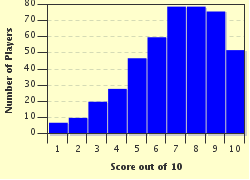Quiz Answer Key and Fun Facts
1. What is another name for a stroke?
2. When the blood supply to a part of the brain is cut off, the cells supplied by that blood vessel are deprived of the oxygen and nutrients needed to function normally and a stroke results.
Which of the following statements regarding stroke is INCORRECT?
3. Which of the following individuals is at GREATEST risk of a stroke?
4. Certain diseases predispose to clot formation. Clots in turn may travel to, and obstruct a vessel in the brain, leading to ischemic stroke.
Which of these conditions does NOT predispose to ischemic stroke?
5. Which of the following manifestations is NOT typical of a stroke?
6. Preceding an actual stroke, some individuals may experience what is called a transient ischemic attack (TIA), in which they experience stroke-like symptoms. These symptoms however, tend to disappear quickly without any intervention.
What advice should you give to a person who has had a TIA?
7. Clinical manifestations of stroke vary widely, depending on which blood vessel is affected. An occlusion of the middle cerebral artery, for example, may result in dysgraphia.
What is dysgraphia?
8. Which of the following studies is used to diagnose ischemic stroke?
9. Tissue plasminogen activator (tPA) is a drug used to dissolve clots in ischemic stroke.
Which statement is TRUE of tPA?
10. In order to reduce the incidence of long term disability, rehabilitative care of stroke victims should begin as soon as possible. This requires the collaborative efforts of a multidisciplinary team.
Which of the following team members helps the stroke survivor to re-learn basic skills such as bathing, dressing, cooking and writing?
Source: Author
yency
This quiz was reviewed by FunTrivia editor
crisw before going online.
Any errors found in FunTrivia content are routinely corrected through our feedback system.

